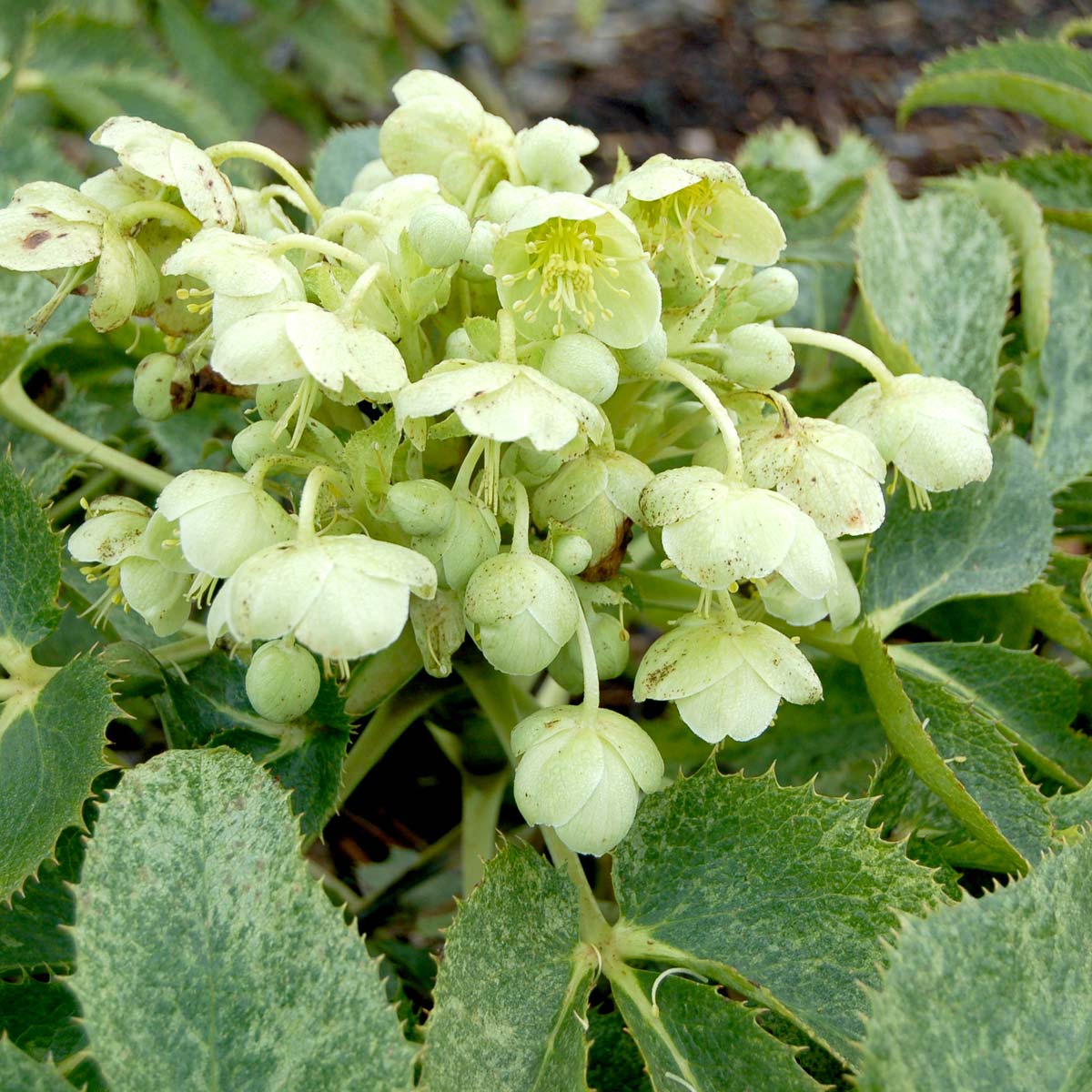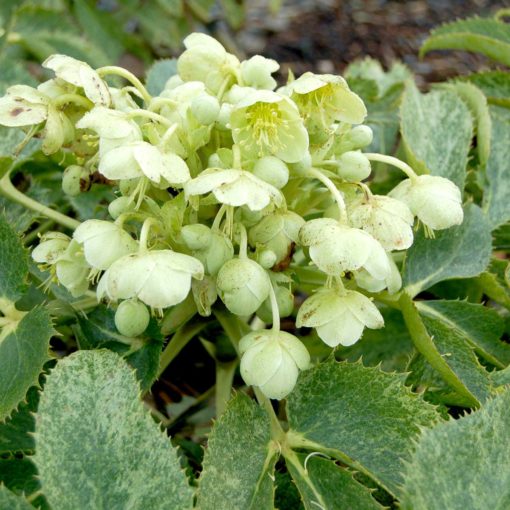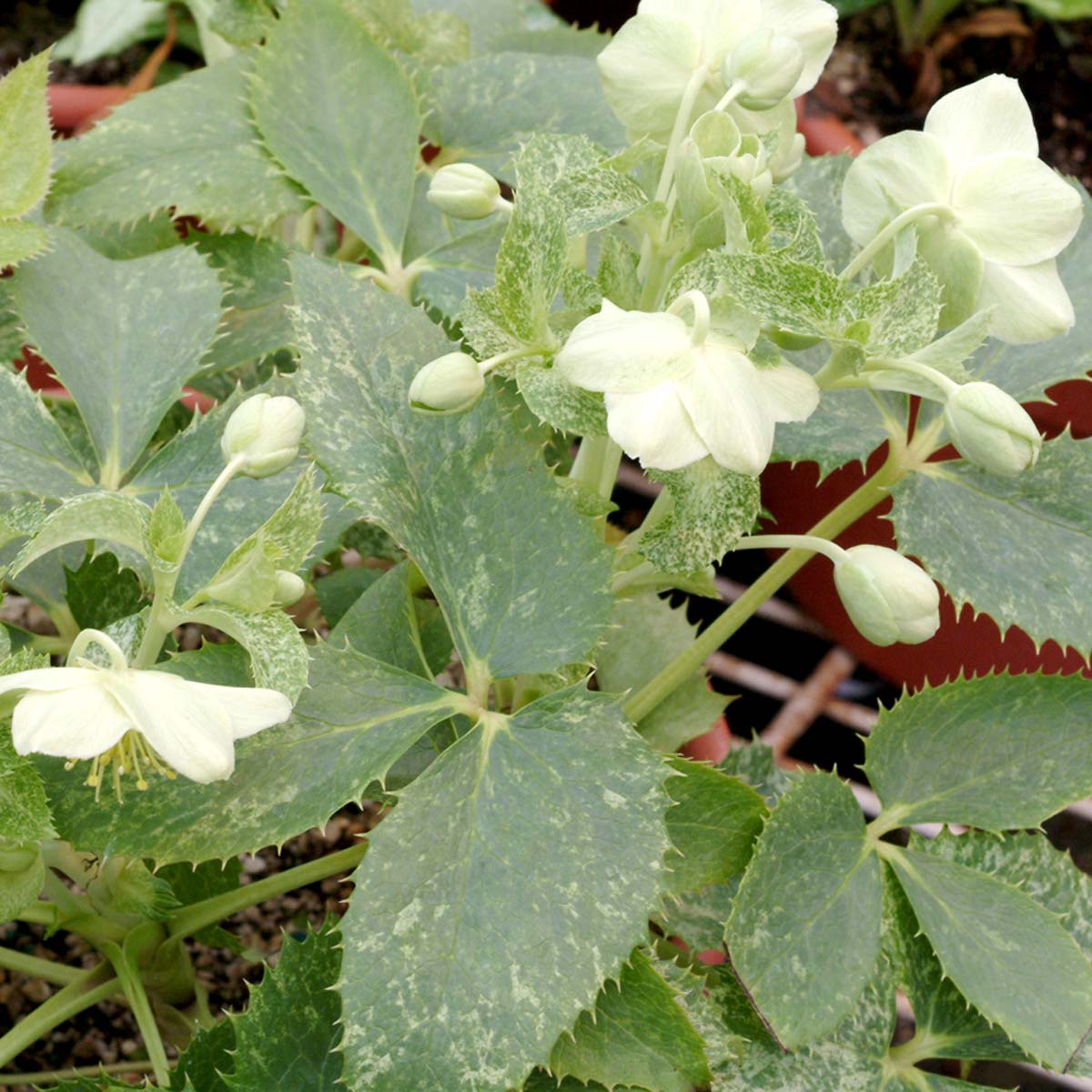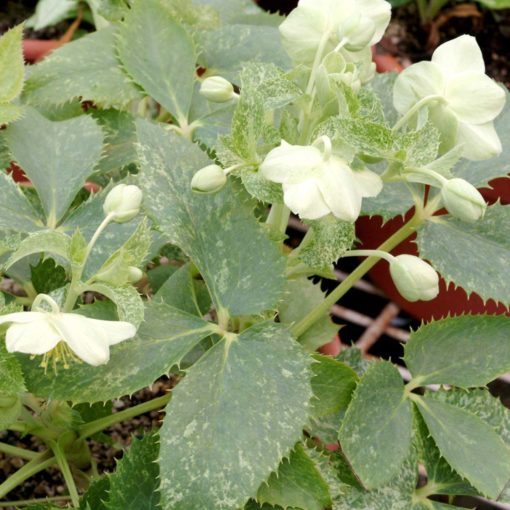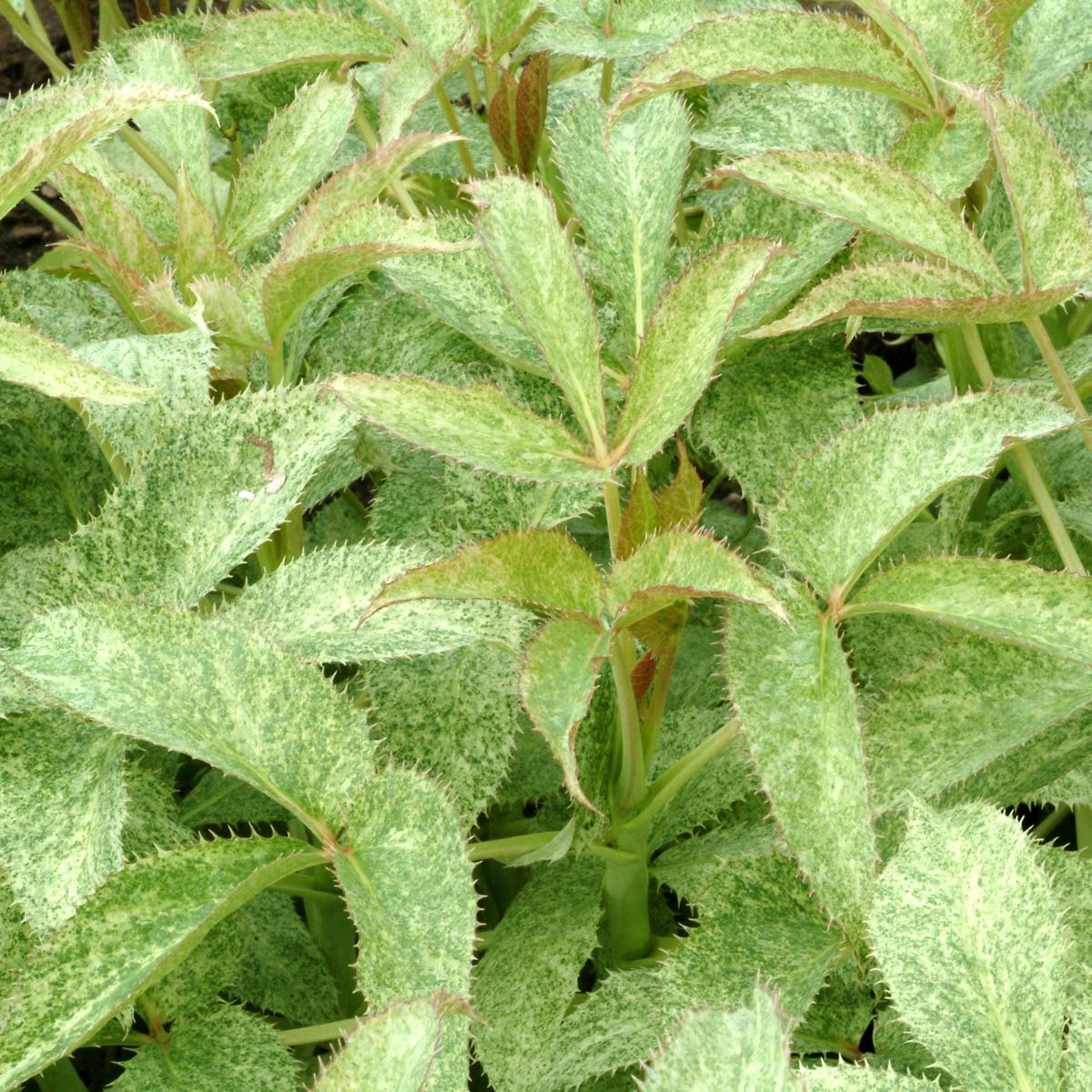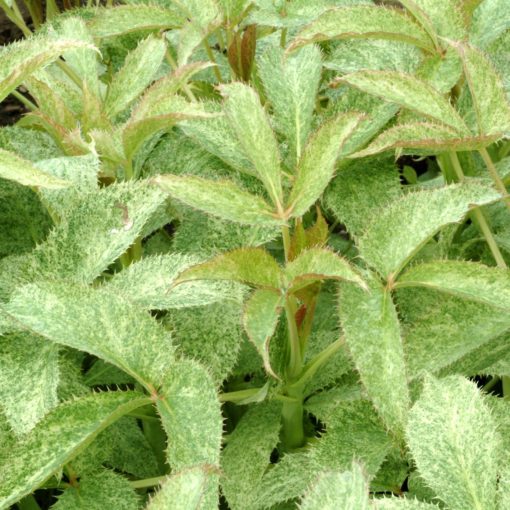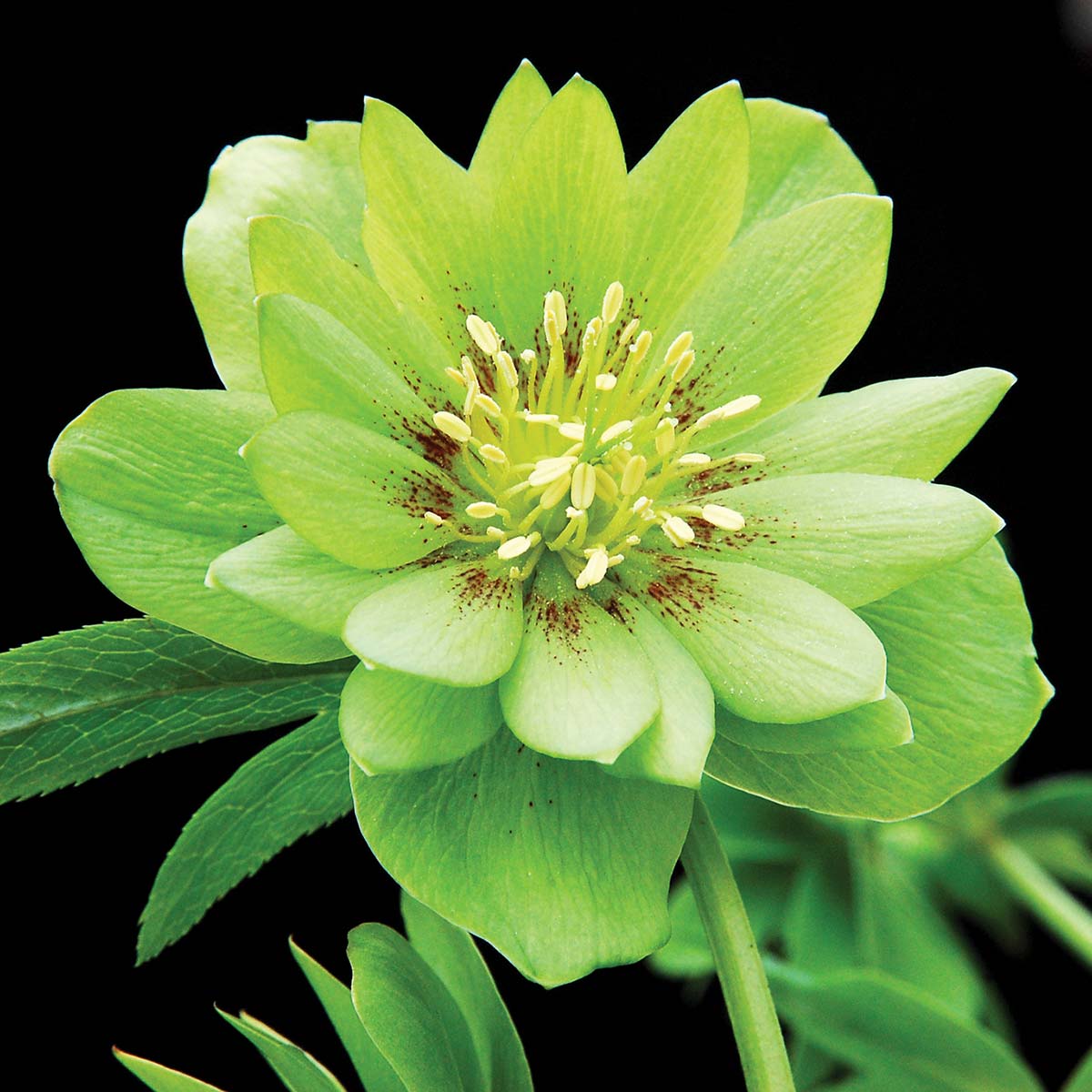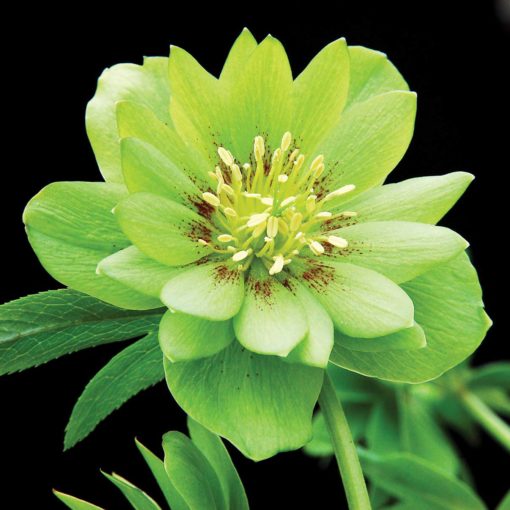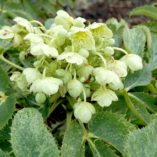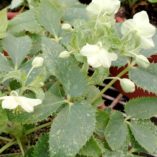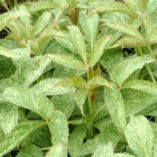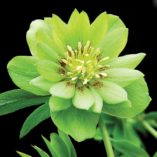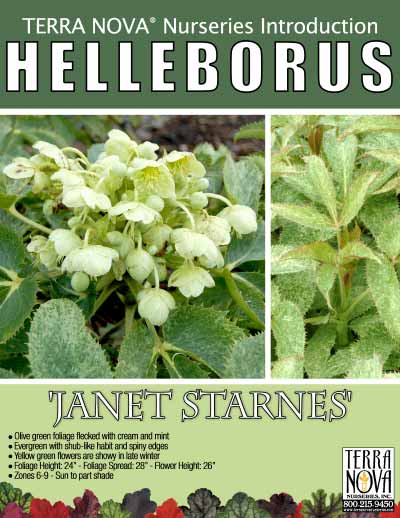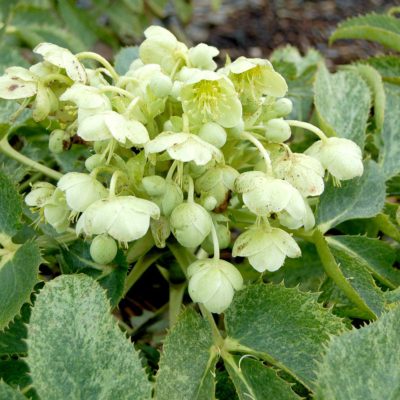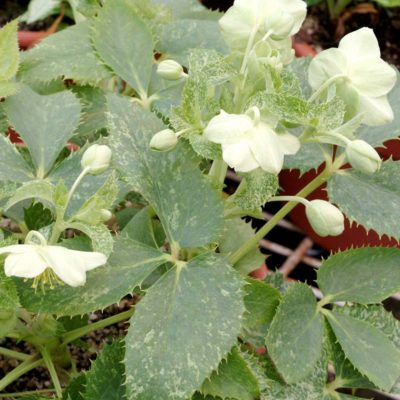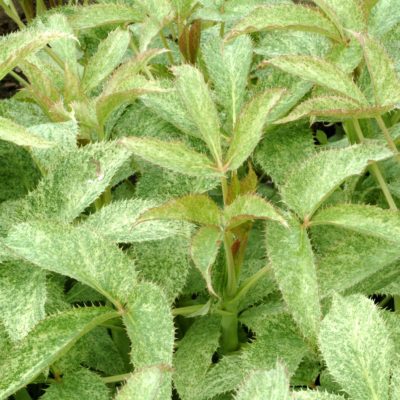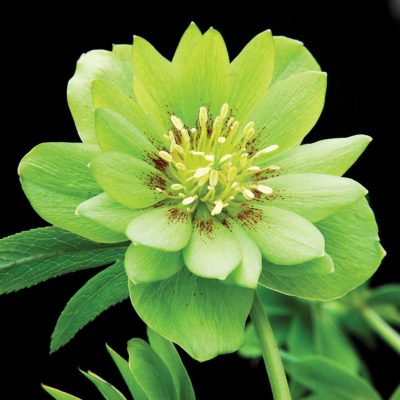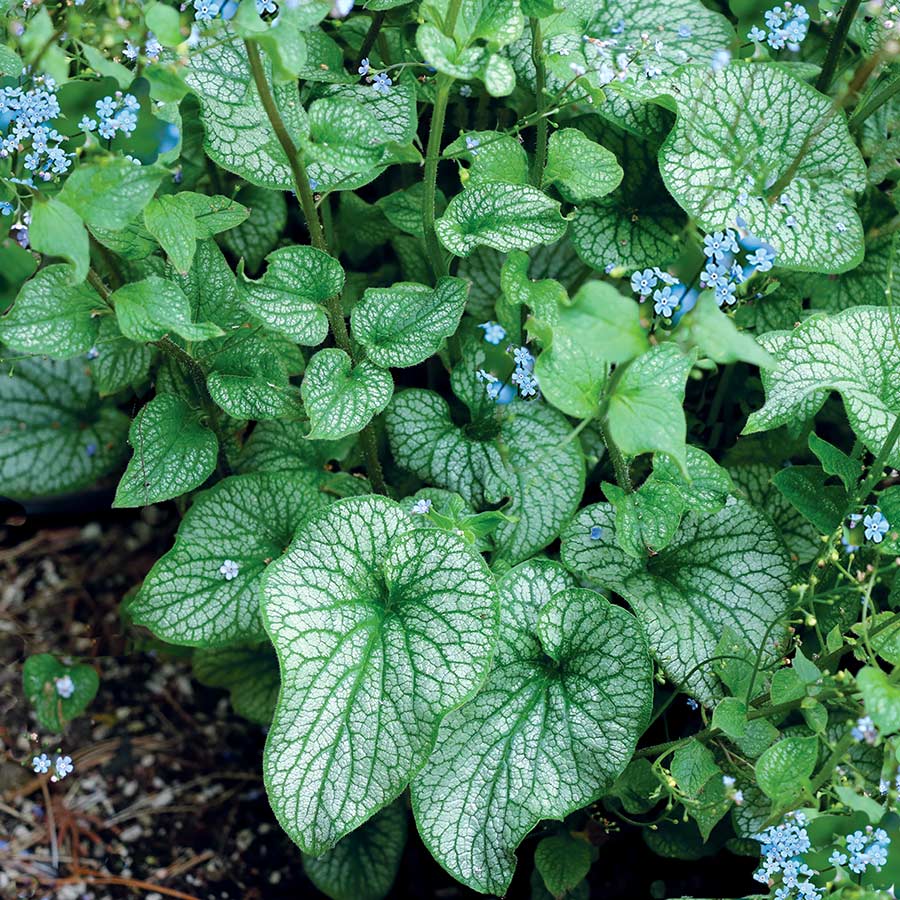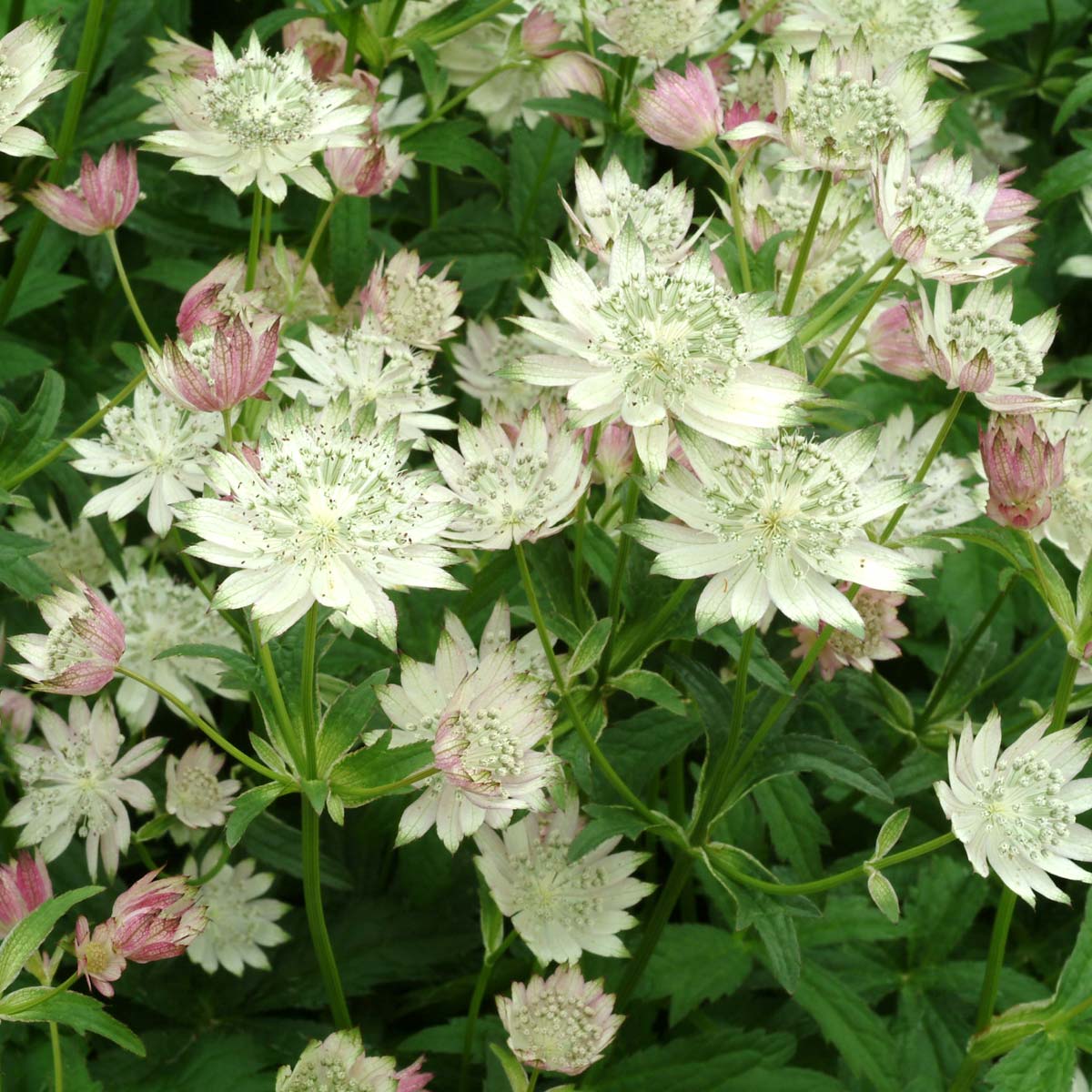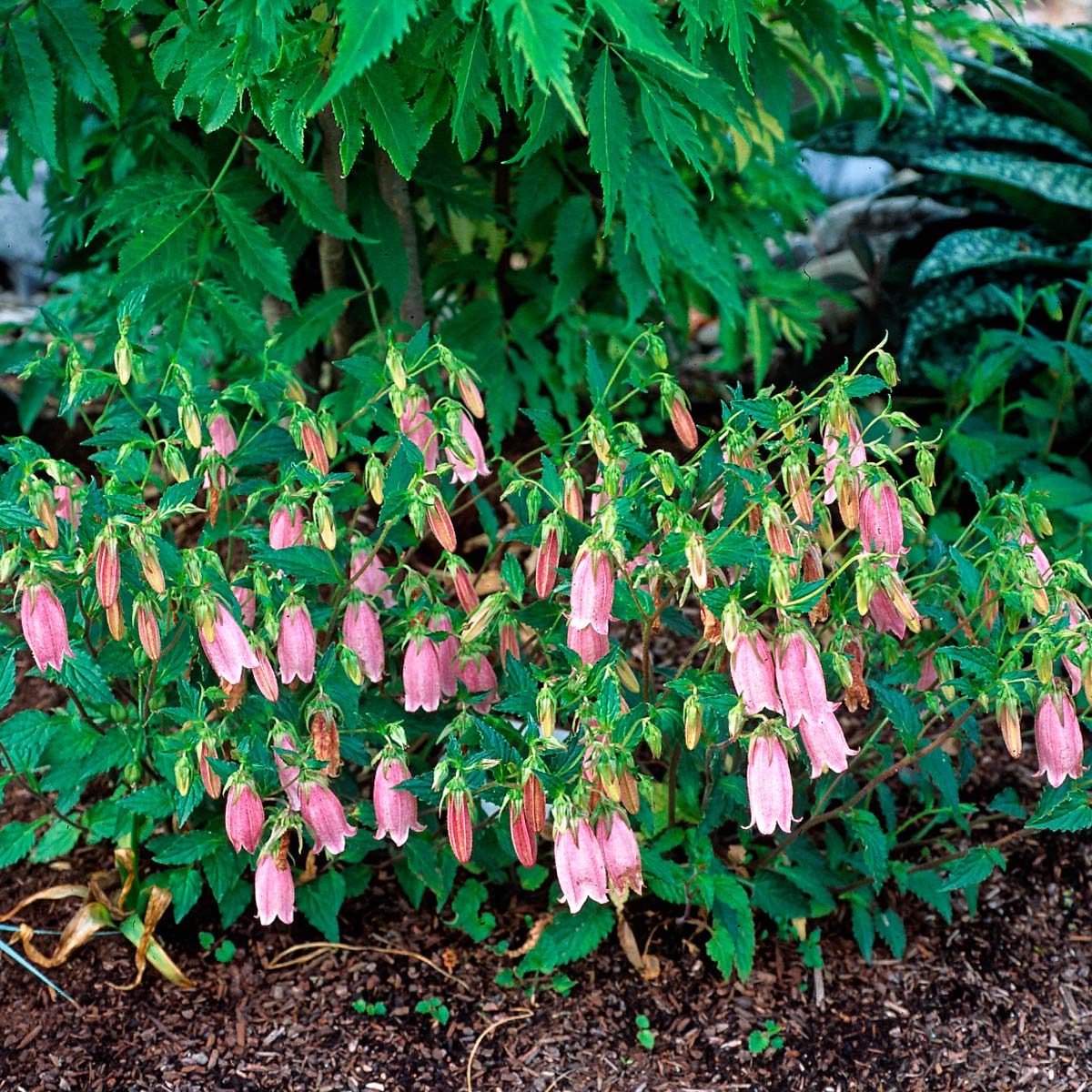| Common Name | Speckled Corsican hellebore |
|---|---|
| Family | Ranunculaceae |
| Genus | Helleborus |
| species | argutifolius |
| Plant Type | Perennial |
| US Patent # | -- |
| EU Grant # | -- |
| Bloom Time | March, April, May |
| Flower Color | Yellow, Green |
| Foliage Color | Green |
| Dormancy | Winter |
| Exposure | Full Sun, Part Shade |
| Growth Habit | Clumping |
| Growth Rate | Moderate |
| Hardiness Zone | 6, 7, 8, 9 |
| How Different? | This variety has speckled variegation. |
| Landscape Value | Bold shrub-like habit makes a good specimen or use in mixed beds. Late winter bloom and speckled foliage add winter interest. |
| Most Active Growing Season | Winter, Spring |
| Persistence | Evergreen |
| Size (HT/W/FL HT) | 24" / 28" / 26" |
| Soil (Garden) | Well drained, average. |
| Water (Garden) | Average |
| Special Uses | Deep South, Deer Resistant, Low Water Usage, Winter Color |
| Comments | Flowers on previous years stems, so take care not to cut plants back. We recommend transplanting to a 4" pot from a plug, not a larger size container. |
Helleborus ‘Janet Starnes’
|
*** PLEASE NOTE ***
This plant is no longer for sale directly from TERRA NOVA® Nurseries. However, it may still be available through one of our Licensees or Retail Sources. |
Deep green foliage flecked with cream and mint, sometime showing pinkish buds and new growth. The foliage is tough with spiny edges and makes a good evergreen presence in the garden. Flowers are yellow green and showy late winter.
USDA Hardiness Zone(s): 6-9
Size (HT/W/FL HT): 24″ / 28″ / 26″
Exposure: Full Sun, Part Shade
Bloom Time(s): March, April, May
| Water (Greenhouse) | Dry completely between waterings. |
| EC | 1.5 – 2.0 |
| pH | 6.0 – 7.2 |
| Fertility Needs | 150 – 200 ppm |
| Notes | — |
| Finish Time to 4″ | 8 – 10 weeks |
| Finish Time to Gallon | — |
| Day Length for Flowering | Short Day |
Tolerant of a wide range of growing conditions, perform best when sited in partial shade in rich, moist, but well-draining soil. Hellebores are quite easy to grow, and since they are perennials, will continue to bloom for a number of years.
Planting
You can plant hellebores anytime between March and August to give them time to root and establish before blooming in the late winter.
Culture
Light: Hellebores prefer partial to full shade. They can handle spring sun, but plant them in a spot that will become shadier as trees and other plants flush out.
Soil: Hellebores grow best in soil that is rich with organic matter and well-draining. If your soil is acidic, consider adding lime, as hellebores prefer neutral or even alkaline conditions.
Fertilizer: Hellebores grow best in soil enriched with copious amounts of organic matter. Plants will benefit from a light application of granular, balanced fertilizer in early spring.
Watering: Although they like some moisture, hellebores should not be allowed to sit in wet soil for a prolonged time or they will rot. Once established, they can handle drier soil.
Pruning: Although evergreen, the foliage often looks tattered in early spring. Prune back dead and disfigured foliage before new growth appears. Remove old flower stems when they decline, cutting back to basal foliage because they carry the flower buds formed in the previous growing season. If seedlings are not desired, remove old flowers before seed is set.
Hellebores are usually planted from potted nursery specimens, even when purchased from online retailers. Hellebore seeds are available, but they are sold in seed packets that include a mix of colors. If you want a particular variety, you will need to purchase potted nursery starts because they have either been selected or hybridized for specific colors.
Hellebores are very easy to grow in shady conditions where most plants struggle, provided they have some shelter from harsh winter winds. The only real maintenance the plants require is a little cleanup of their fading leaves. If foliage is winter-worn, it can be cut back to basal growth in the spring, before flowering.
When to plant Hellebores?: Hellebores can be planted either in the spring or fall. For fall planting, allow enough time for roots to grow before the ground freezes. Four-five weeks is optimal.
Do hellebores spread?: Yes, hellebores will self-sow. However, allowing them to do so may result in unexpected hybrids if you grow multiple types in close proximity. Thin out any new seedlings that are too close to mature plants. Expect self-sown plants to flower after three years.
Do hellebores need to be divided?: It’s not usually necessary for the health of the plant; but if you wish to divide them, this is best done in fall. Hellebores can be fussy about being dug up and moved, so it’s generally just best to leave them be.

